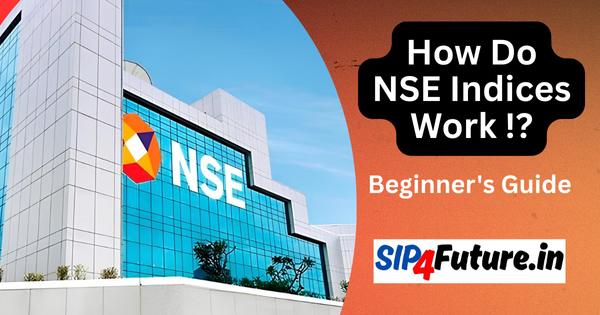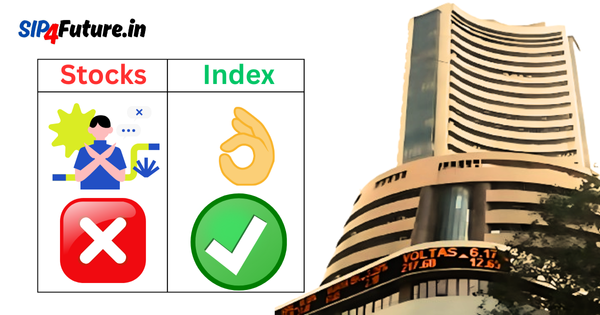Bharat Petroleum Corporation Limited (BPCL), a leading Maharatna public sector undertaking (PSU) in India’s oil and gas sector, reported its Q4 FY 2024-25 results on April 30, 2025, showcasing a blend of resilience and challenges. Despite a 31% sequential decline in net profit to Rs 3,214 crore, BPCL surpassed market expectations, driven by robust refining margins and inventory gains. This article delves into BPCL’s financial performance, stock trends, sectoral influences, government policies, global market dynamics, and future outlook, providing a comprehensive view for investors and stakeholders.
What Drove BPCL’s Q4 Financial Performance?
BPCL’s Q4 net profit of Rs 3,214 crore marked a 31% drop from Rs 4,649 crore in Q3 FY25, yet it outperformed analyst estimates of Rs 2,700 crore. The company’s revenue from operations slightly declined by 1.7% quarter-on-quarter to Rs 1,26,864.93 crore, reflecting stable demand for petroleum products. The standout factor was BPCL’s gross refining margin (GRM), which reached $9.2 per barrel in Q4, contributing to an annual GRM of $6.82 per barrel for FY 2024-25. This improvement in refining margins, coupled with inventory gains, cushioned the impact of lower marketing margins and LPG under-recoveries.
The company’s operational efficiency was evident in its EBITDA, which rose 2.4% sequentially to Rs 7,765 crore, with operating margins expanding from 6.7% to 7%. BPCL’s ability to navigate volatile crude oil prices and optimize its refining processes underscores its operational strength. Additionally, the board recommended a final dividend of Rs 5 per equity share, reinforcing its commitment to shareholder value.
| Financial Metric | Q4 FY25 | Q3 FY25 | Change (QoQ) |
|---|---|---|---|
| Net Profit (Rs crore) | 3,214 | 4,649 | -31% |
| Revenue (Rs crore) | 1,26,864.93 | 1,27,520.50 | -1.7% |
| EBITDA (Rs crore) | 7,765 | 7,580 | +2.4% |
| Operating Margin (%) | 7 | 6.7 | +0.3% |
| Gross Refining Margin ($/bbl) | 9.2 | 5.95 (9M FY25) | – |
Source: Moneycontrol
How Did BPCL’s Stock Perform in Q4 2025?
On April 30, 2025, BPCL’s stock closed at Rs 311.70 on the National Stock Exchange (NSE), unchanged from the previous session. Despite the flat daily performance, the stock has faced volatility in FY25, with a 52-week high of Rs 376 and a low of Rs 234.01. The stock’s trailing twelve-month (TTM) price-to-earnings (P/E) ratio stood at 10.14, indicating potential undervaluation compared to the sector P/E of 9.29. The price-to-book (P/B) ratio was 1.79, suggesting the stock is trading at a reasonable multiple relative to its net assets.
BPCL’s market capitalization was approximately Rs 1,35,231.22 crore as of April 30, 2025, ranking it among the top players in India’s oil and gas sector. The stock’s dividend yield of 6.77% remains attractive for income-focused investors, supported by consistent payouts, including the recent Rs 5 final dividend and a prior interim dividend of Rs 5 per share.
Posts on X reflected mixed sentiment, with some analysts highlighting BPCL’s strong Q4 results and others noting challenges like crude price volatility and LPG losses. For instance, a post by @ZeeBusiness recommended buying BPCL futures, citing impressive GRM and strong results, while @FilterCoffeeHQ pointed to margin pressures from subsidized LPG.
What Sectoral Factors Influenced BPCL’s Performance?
The oil and gas sector, a critical pillar of India’s economy, is influenced by domestic demand, global crude prices, and regulatory frameworks. BPCL, with a refining capacity of 35.3 million metric tonnes per annum (MMTPA) across its Mumbai, Kochi, and Bina refineries, holds a 14-15% share of India’s total refining capacity. The company’s downstream petroleum operations, which include fuel retailing, LPG distribution, and lubricants, generate the majority of its revenue.
In Q4 FY25, India’s petroleum product demand grew by 6.4%, driven by rising consumption of petrol, diesel, and aviation fuel. BPCL capitalized on this trend by expanding its retail network, commissioning 1,082 new outlets to reach a total of 22,921. However, challenges such as declining gasoline crack spreads and reduced discounts on Russian crude impacted profitability. The company’s strategic shift toward renewable energy and compressed natural gas (CNG) infrastructure aligns with India’s energy transition goals, potentially mitigating future risks.
| Sectoral Metrics | Details |
|---|---|
| Refining Capacity (MMTPA) | 35.3 (Mumbai: 12, Kochi: 15.5, Bina: 7.8) |
| Retail Outlets (as of Q4 FY25) | 22,921 |
| Petroleum Product Demand Growth | 6.4% (FY25) |
| Key Competitors | Indian Oil, Hindustan Petroleum, Reliance |
Source: Bharat Petroleum Corporation Ltd
How Do Government Policies Impact BPCL’s Stock Price?
As a PSU with the Government of India holding a 52.98% stake, BPCL’s performance is closely tied to policy decisions. The government’s focus on energy security and clean energy has prompted BPCL to invest in sustainable aviation fuel (SAF) refineries and LPG infrastructure. On April 25, 2025, Prime Minister Narendra Modi laid the foundation stone for a Rs 340.15 crore LPG bottling plant in Hathua, Bihar, aimed at enhancing energy access and reducing carbon emissions.
However, policies like subsidized LPG pricing have led to under-recoveries, denting BPCL’s margins. The government’s decision to maintain stable fuel prices despite global crude price fluctuations has also squeezed marketing margins for oil marketing companies (OMCs) like BPCL. Speculation around PSU divestment, though not materialized, continues to influence investor sentiment. The Ministry of Petroleum and Natural Gas’s decision not to allocate capital support to OMCs has pushed BPCL to rely on internal funds, as noted in its Q2 FY25 announcement.
External resources, such as the Ministry of Petroleum and Natural Gas, provide insights into policies shaping the sector, while BSE India tracks BPCL’s stock movements in response to such developments.
When Do Global Market Dynamics Affect BPCL’s Trading Conditions?
Global crude oil prices, geopolitical events, and supply-demand dynamics significantly impact BPCL’s operations. In Q4 FY25, crude oil prices remained relatively stable, with Brent crude hovering around $70-80 per barrel. This stability supported BPCL’s auto-fuel margins, but the decline in Russian crude discounts, which fell in FY25, increased input costs. OPEC+’s decision to increase output, as reported on April 4, 2025, led to a temporary dip in crude prices, benefiting OMCs like BPCL.
Globally, refinery closures have enhanced BPCL’s gross refining margins by reducing supply overhang. However, macroeconomic pressures, such as currency depreciation and inflation, pose risks to profitability. BPCL’s international trade department, responsible for securing crude supplies from partners like Petrobras, plays a crucial role in mitigating these risks. The company’s agreement with Petrobras, announced in February 2025, ensures a stable crude supply, reinforcing its energy security strategy.
How Is BPCL Positioning for Future Growth?
BPCL’s strategic investments signal a forward-looking approach. The company plans to increase its capital expenditure to Rs 16,000 crore in FY25, up from Rs 13,000 crore, with FY26 projections at Rs 18,500-19,000 crore. Key projects include a proposed refinery in Andhra Pradesh and expansions in CNG and LNG infrastructure. BPCL’s focus on renewable energy, including compressed bio-gas plants through a joint venture with Praj Industries, aligns with India’s net-zero goals.
The company’s debt management is also noteworthy, with debt reduced to Rs 58,880 crore from Rs 64,000-69,000 crore, supported by reserves of Rs 72,835 crore. A lower debt-to-equity ratio enhances BPCL’s financial stability, making it an attractive investment option.
What Are the Risks and Opportunities for BPCL Investors?
Investors face a mix of opportunities and risks. BPCL’s strong fundamentals, high dividend yield, and undervaluation (P/E of 10.14) present a compelling case for long-term investors. Analyst ratings, with 21 of 31 analysts recommending a “Buy,” reflect optimism about BPCL’s growth potential. However, risks include LPG under-recoveries, volatile crude prices, and potential policy shifts.
Short-term traders may capitalize on BPCL’s stock momentum, with forecasts suggesting a trading range of Rs 294-318 in the next two weeks, driven by positive Q4 results. Long-term investors can benefit from BPCL’s strategic investments and shareholder-friendly policies.
What Do Analysts Predict for BPCL’s Future?
Analyst price targets for BPCL vary, reflecting different time horizons and market assumptions:
| Research Institute | Rating | Target Price (Rs) | Upside Potential |
|---|---|---|---|
| Citi | Buy | 390 | 25% |
| Motilal Oswal | Buy | 360 | 15% |
| PL Capital | Hold | 332 | 6.5% |
| HSBC | Buy | 375 | 20% |
Source: Economic Times
Historical Returns
- 1-Year Return: 0.26% (underperforming Nifty 100’s 39.54%)
- 3-Year Return: 70.99% (outperforming Nifty 100’s 39.54%)
- 5-Year CAGR: 18.12%
BPCL’s historical returns highlight its long-term growth potential, despite short-term volatility. The stock’s resilience during market downturns makes it a stable choice for diversified portfolios.
Bharat Petroleum Corporation Ltd remains a cornerstone of India’s energy sector, balancing operational challenges with strategic growth. Its Q4 FY25 performance, marked by a 31% profit dip but strong refining margins, underscores its ability to navigate a complex landscape. With a robust dividend policy, expanding retail network, and investments in renewable energy, BPCL is well-positioned for future growth. However, investors must monitor risks like crude price volatility and policy-driven margin pressures.
For those considering BPCL’s stock, the current valuation, high dividend yield, and analyst optimism present a compelling opportunity. Whether you’re a short-term trader or a long-term investor, BPCL’s blend of stability and growth potential warrants attention.
Disclaimer: This article is provided for educational purposes only and should not be construed as investment advice. The information presented is based on publicly available data and analyst reports, but stock market investments are subject to risks. Past performance is not indicative of future results. Investors should conduct thorough research and consult a qualified financial advisor before making investment decisions. The author and publisher are not responsible for any financial losses incurred from reliance on this information.




